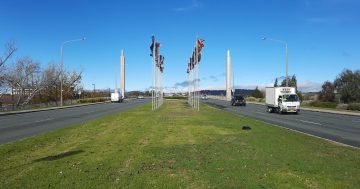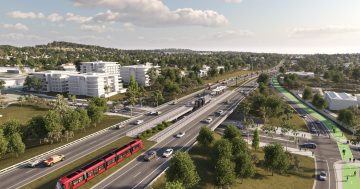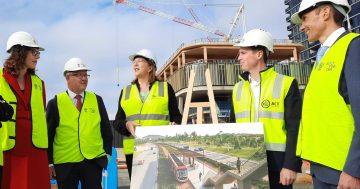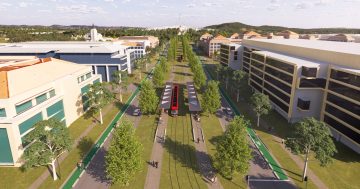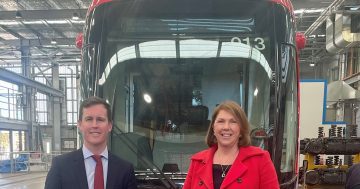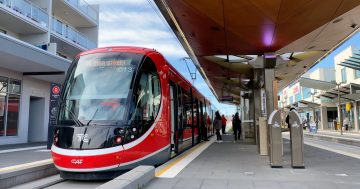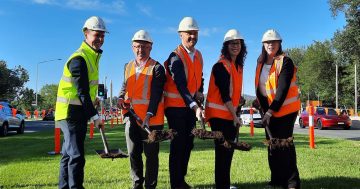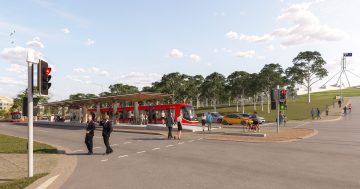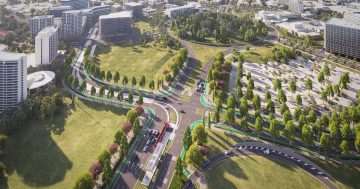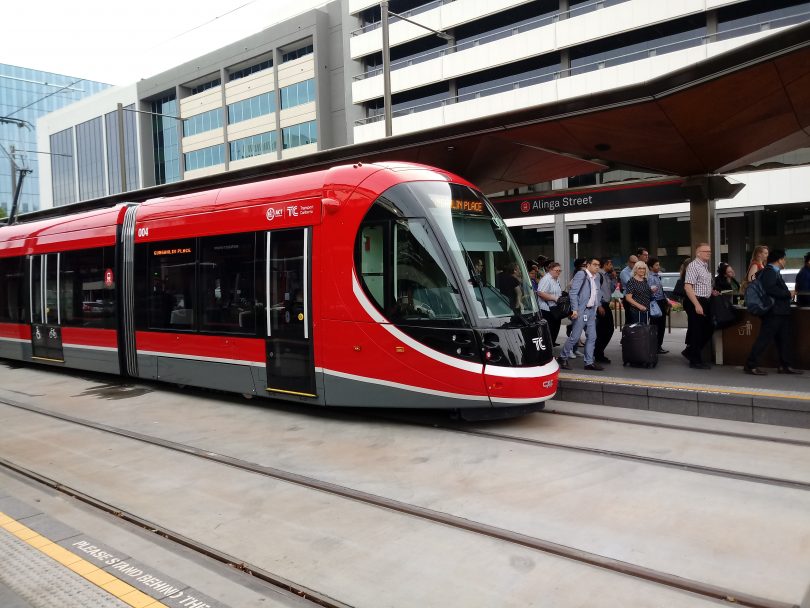
Light rail in the city. Coming not so soon to Woden. Photo: File.
No train without the pain. The north had its share; now it’s the south’s turn.
That’s what Canberra drivers and commuters have to face up to now that construction of the next leg of the line is in sight.
We’re looking at possibly a decade of upheaval on the southside as first the city stage is built, and then the lengthier and much more complex Woden stage is rolled out through the parliamentary zone and down Adelaide Avenue.
It’s going to take four years from 2022 to complete the line to Commonwealth Park, mainly due to the major engineering feat of reconfiguring the London Circuit/Commonwealth Avenue overpass and cloverleaf arrangement to an at-grade intersection.
Stage 2B across the lake has multiple hoops to jump through and far greater engineering challenges – a new bridge, negotiating the parliamentary areas and Adelaide Avenue and Yarra Glen pedestrian bridges for starters.
Even if a start could be made before the city stage is completed, it’s going to take a fair swag of the Twenties to make it to Woden.
After three elections, there is no doubt the Barr Government has a mandate to get the job done, but Transport Minister Chris Steel provided a dose of reality this week when outline just what will be required of us.
Lane closures, delays, diversions – for years.
Many of us stuck in gridlock on Parkes Way or Kings Avenue or held up by lollypop people on a much-reduced Commonwealth Avenue may rethink that vote for light rail.
Certainly, a few Liberals might be tempted to say I told you so.
Transport spokesperson Mark Parton is already taking potshots at the government over the coming impacts on business and commuters, but he would do better to accept the reality of light rail, ensure that the new Disruption Taskforce lives up to its mission statement, and hold the government to account on how the project is managed.
After all, he might have to one day steer the project himself.
Mr Steel knows it is going to be tough. That’s why he is preparing Canberrans now, working with affected businesses and asking commuters to start rethinking their travel routines.
Getting people out of their cars and into buses will be part of the solution and an opportunity to transform commuting habits and increase public transport use permanently.
The pandemic has already opened the way to greater work flexibility. The plea for big employers to embrace staggered starting times could also lead to that strategy becoming part of the city’s traffic management landscape.
Communication will play a big part in getting Canberrans through this, but keep it real, Minister, forget the spin and be upfront with commuters.
We need to remember why the ACT is doing light rail, and that it is a big, long-term project that will improve the way Canberrans get around this city, take pressure off our roads, and eventually connect the city from end to end.
The alternative for a city growing to half a million is simply more congestion.
So there is a great opportunity, but let’s not kid ourselves that the process will be easy.
Living with a construction site in the city, at Woden and in between will be messy and frustrating.
There will be a lot that can go wrong, so the government, whatever the shade, will need to get a lot right.












